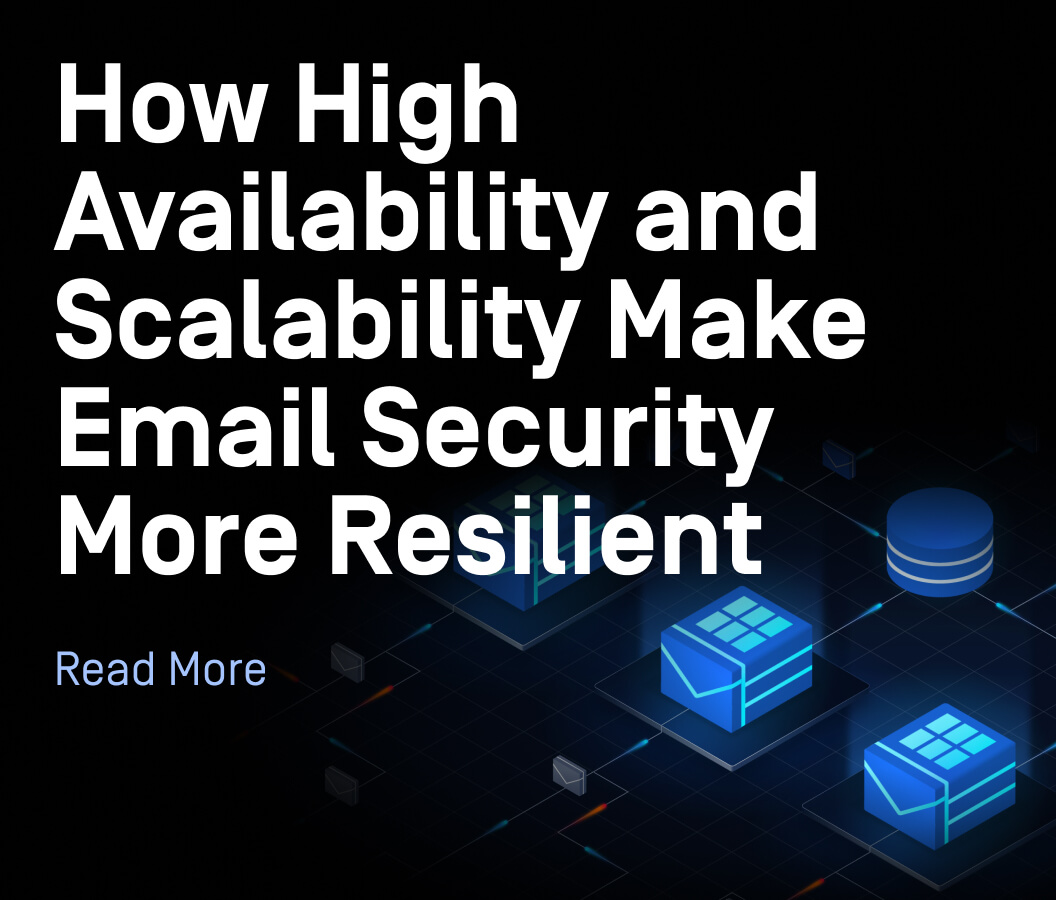Introduction
In the ever-evolving landscape of cyber threats, credential harvesting has surged to the forefront as a primary concern for security practitioners. This method, where threat actors covertly extract login details, represents not just a violation of privacy but a potential launchpad for systemic organizational breaches.
For today's CISOs, IT Security Managers, and Security Analysts, especially within critical infrastructure sectors, it is imperative to add an advanced layer of defense to traditional email security to decrease the risk of credential harvesting.
The stakes couldn't be higher as incidents of credential compromise can trigger significant operational disruptions and financial devastation. This article cuts through the noise to deliver a sharp, detailed analysis of credential harvesting. It arms cybersecurity professionals with the vital insights necessary to bolster their defenses and ensure their networks stay one step ahead of this relentless threat.
- What is Credential Harvesting
- Why is Credential Harvesting a Major Security Concern
- The Role of Phishing in Credential Harvesting Attacks
- Where Does Credential Harvesting Occur Most Frequently?
- 4 Ways OPSWAT Can Help You Defend Against Credential Harvesting
- When Should Organizations Act to Protect Against Credential Harvesting?
- How Can Organizations Develop a Robust Strategy Against Credential Harvesting?
What is Credential Harvesting?
Credential harvesting is the covert collection of usernames, passwords, and access credentials by attackers. Using tactics like sophisticated phishing campaigns, keystroke logging, or exploiting network vulnerabilities, adversaries siphon off login details to hijack user accounts. This information is often the first domino in a chain leading to more devastating security incidents.
In the hands of a malicious actor, these credentials can open the floodgates to data exfiltration, financial fraud, and long-term network compromise. For cybersecurity professionals, the term 'credential harvesting' encapsulates a primary concern: the unauthorized receiving of access keys to a network, which can dismantle the very foundations of organizational security.

Why is Credential Harvesting a Major Security Concern for Critical Infrastructures?
Critical infrastructure sectors such as energy, healthcare, finance, and transportation are high-value targets for credential harvesting attacks due to the sensitive and essential nature of the data and operations they manage. A successful attack can lead to catastrophic outcomes, including operational shutdowns, data breaches, and widespread public safety risks.
For example, the healthcare sector has been a frequent target, where attackers harvest credentials to gain access to patient data and disrupt services. Similarly, the energy industry has faced numerous attacks aimed at compromising control systems and disrupting supply chains.
The Role of Phishing in Credential Harvesting Attacks
Phishing remains one of the most effective methods for credential harvesting. Attackers send deceptive emails that appear to be from trusted sources, tricking recipients into providing their login credentials. These phishing campaigns can be highly targeted, using sophisticated social engineering techniques to exploit specific individuals within an organization.
In critical infrastructure, phishing attacks can have dire consequences. For instance, a phishing attack on an energy company could lead to attackers gaining control of industrial control systems, causing physical damage and widespread power outages. This makes it essential for these sectors to adopt robust anti-phishing measures.
Where Does Credential Harvesting Occur Most Frequently?
Credential harvesting often occurs via email, exploiting the ubiquity of communication platforms and the volume of messages exchanged daily. Social media platforms are also ripe for exploitation due to personal information that is readily shared.
Public Wi-Fi networks add to the list of vulnerable hotspots, with attackers setting up fake access points or intercepting unsecured traffic. Security leaders must ensure robust endpoint protection and secure communication protocols to shield their organizations from these common attack vectors.
A multi-layered security approach is essential for defending against credential harvesting. This strategy involves implementing multiple defenses that work together to provide comprehensive protection:
- Advanced Firewalls and IDS/IPS: These baseline defenses help monitor and block suspicious activities (The HIPAA Journal).
- Multi-Factor Authentication (MFA): MFA adds an extra layer of security by requiring more than one method of authentication, making it significantly harder for attackers to gain access even if they have harvested credentials.
- User and Endpoint Behavior Analytics (UEBA): Helps detect abnormal behavior that may indicate compromised credentials, allowing for early intervention.
- Regular Security Audits and Penetration Testing: Identifies and addresses vulnerabilities before they can be exploited.
- Security Awareness Training: Educates employees on recognizing and responding to phishing attempts and other social engineering tactics.
4 Ways OPSWAT Can Help You Defend Against Credential Harvesting
OPSWAT provides a comprehensive suite of security solutions designed to protect critical infrastructure from credential harvesting and other cyber threats. Key features of OPSWAT's solutions include:

Real-Time Anti-phishing Technology
Enhances detection capabilities, analyzing threats in real time, and adapting to evolving tactics. This includes time-of-click analysis for link reputation checks from over 30 online sources, ensuring that even if a link was initially deemed safe but later compromised, the user will be alerted in real-time.

Multi-Layered Detection
Using advanced heuristics and machine learning algorithms, OPSWAT's solutions detect sophisticated phishing attempts designed to harvest credentials. This approach reduces the risk of initial compromise by analyzing patterns and anomalies that deviate from typical user behavior.

QR Code Scanning and Rewrite
With the increasing use of mobile devices, phishing attacks have evolved to include QR codes that lead to malicious websites designed for credential harvesting. OPSWAT's solution scans and rewrites QR codes to intercept and neutralize such attacks before they reach the user.

Comprehensive Email Security
OPSWAT's email security solutions offer a 99.98% detection rate for spam and phishing attacks, ensuring robust protection against one of the most common gateways to broader cyber attacks. This includes deep content disarm and reconstruction (CDR) technology to sanitize email attachments and neutralize threats.
When Should Organizations Act to Protect Against Credential Harvesting?
The time to bolster defenses against credential harvesting is now—before an incident occurs.
Organizations must regularly assess, update and patch systems, enforce strong password policies, and conduct continuous monitoring for suspicious activities. These practices, alongside real-time threat intelligence, enable IT teams to respond swiftly to potential compromises.
Additionally, cybersecurity drills and incident response simulations can prepare organizations for the inevitability of an attack, ensuring that teams can respond with speed and precision. The goal is to minimize the 'dwell time' of threat actors and mitigate potential damage swiftly.
How Can Organizations Develop a Robust Strategy Against Credential Harvesting?
Developing a robust strategy against credential harvesting is a multifaceted endeavor. It starts with a comprehensive email security assessment, identifying existing security gaps in an organization’s email security defenses.
From there, CISOs must engineer a tailored security framework that encompasses advanced email defense layers, user education, and rigorous process controls. This framework should be regularly reviewed and adjusted to adapt to new threats. Crucially, it must include a clear incident response plan, ensuring that the organization can quickly regain its footing after an attack.

